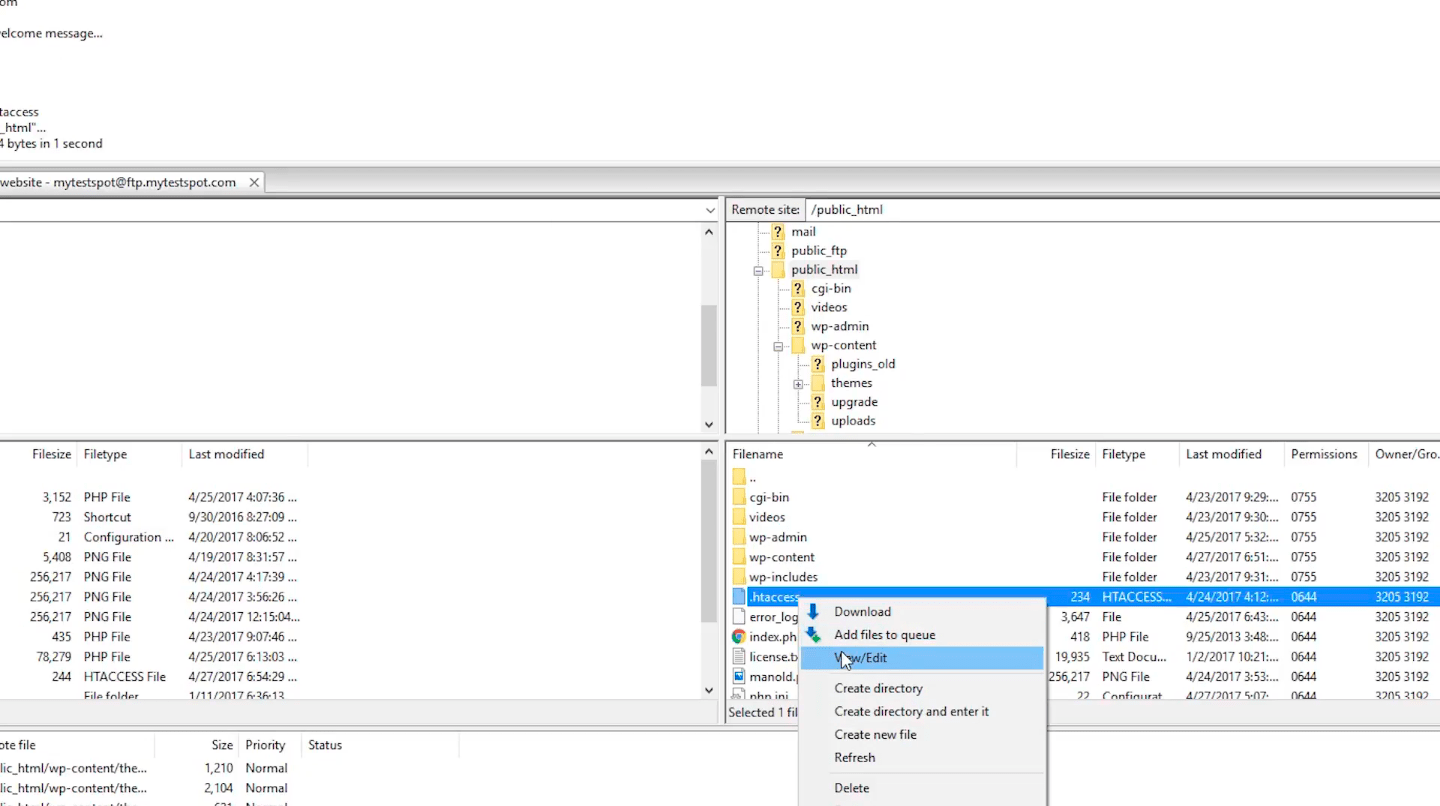

- #Interarchy not showing htaccess file software#
- #Interarchy not showing htaccess file code#
- #Interarchy not showing htaccess file password#
You can password protect an entire site by adding the. To password protect a specific directory, navigate to that directory and create a new. htaccess get encrypted for added security. Once landing on a password-protected page, a pop-up from the browser will appear. A protected site or pathway will require a username and password to access. You can add password protection either to your entire site, or only to specific directories. Htaccess file: Adding password protection An absolute path should be the directory to re-direct to. You should always use a relative path as the source directory. htaccess file is: Redirect /directory_to_redirect_from/ You can also redirect to either an absolute path on your site, or somewhere else entirely on the Internet. You can direct from any relative path within your site director. htaccess file: ErrorDocument 401 /error_pages/401.html ErrorDocument 404 /error_pages/404.html ErrorDocument 500 /error_pages/500.htmlĪnother common use of.
#Interarchy not showing htaccess file code#
To implement these error pages into your site, add the following code to your. You should name each of the error pages only using its error code (i.e. Additionally, you should place each of them in a directory called error_pages in your root directory. You can create your own custom HTML pages for each of the common error types. Having a way for the user to get back to where they intended to go can be helpful. (Click to Tweet this Tip) The common “404 File Not Found”, “401 Unauthorized Access” or “500 Internal Server Error” messages can be fairly alarming. This allows for more useful messages, in the advent a visitor encounters an error message. htaccess file allows for setting up custom error pages. Alternatively, you can run the command chmod 755. There should be a “File Permissions” option in your FTP client. If for some reason it seems that no changes have taken effect, it may be due to incorrect file permissions. Once you have the file on your server, test to see that it’s doing what it’s supposed to be.

There should be an option to set the transfer mode in your FTP client. By default, most FTP clients will transfer data via BINARY mode, which is ineffective for transferring dot files. htaccess file to a server, you must transfer via ASCII mode. This means that each file will effect the directory its located in, as well as all files and subdirectories. htaccess files on a server, and each file always works recursively. Or you can use the ls -a command to display all files on the command line. You typically have to select a “Show hidden files” option from your operating system’s preferences. By default, an operating system hides dot files in finder windows or any sort of system file manager. Dot files can be for an operating system or a piece of software. Dot files are almost always some form of configuration file. htaccess is commonly known as a “dot file”, due to it starting with a period or dot. htaccess file and implement a couple of its most common uses.

Some of its functions include redirection, password protection, restricting access based on certain conditions, and more. htaccess file can do many powerful things. While the syntax it uses can be a bit confusing at first, the.
#Interarchy not showing htaccess file software#
Apache is widely used server software for cross-platform operating systems. This file governs many configuration settings for the Apache Web Server. Browsing through the file manager of your cPanel or hosting account, you may have seen a file called.


 0 kommentar(er)
0 kommentar(er)
